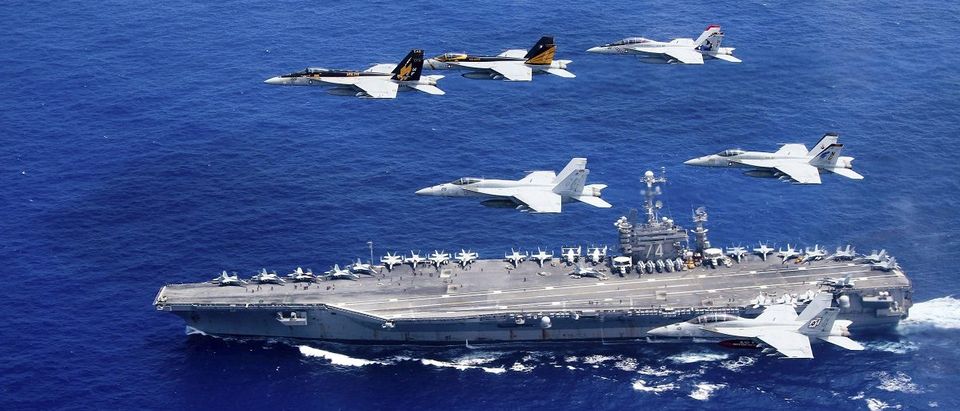Officials revealed that the U.S. Navy is confident its carriers and other key strategic units can hold their own inside China’s growing anti-access zones in the Asia-Pacific region.
“A2/AD is certainly a goal for some of our competitors, but achieving that goal is very different and much more complicated,” argues Adm. John Richardson in an interview with the National Interest, indicating that rival states with anti-access ambitions are struggling to develop weapons capable of permanently boxing out the U.S. military. When questioned about whether or not U.S. carriers can survive rival anti-access A2/AD systems, Richardson reportedly responded with an adamant “Yes.”
The logic is that A2/AD weapons technology, while it has a fancy new name, is not a new concept. A2/AD weaponry is essentially long-range weaponry. Missiles are just the latest evolution of long-range weaponry, explains the National Interest.
China’s “keep out” diplomacy and projectile-based A2/AD defense systems are generally regarded as threats to the resurgence of American military power in the Asia Pacific. China’s so-called “carrier killer” missiles are considered serious challenges to American naval and air operations in the Asia Pacific by military insiders.
China is building a missile wall to deter U.S. incursions into the South China Sea and East China Sea, regions where China hopes to carve out a sphere of influence for itself.
China cannot compete with U.S. Naval and air power, so it uses missiles as a primary deterrent. Projectile weapons are much easier and cheaper to produce than advanced naval and air units. Anti-ship ballistic missiles (ASBM), anti-ship cruise missiles (ASCM), surface-to-air missiles (SAM), fast attack submarines, and intelligence, surveillance, and reconnaissance (ISR) systems are the core components of China’s A2/AD strategy.
Richardson and Rear Adm. DeWolfe Miller assert that Chinese A2/AD zones are not “impenetrable domes.
Defense strategies using long-range weapons to deny access to superior forces has been a component of war for centuries, the military is factoring this into its calculations and strategies. That other countries are developing A2/AD technology is not a surprise.
Miller suggested that the A2/AD threat to the U.S. Navy was actually greater during the Cold War, when the Soviets deployed countless Tupolev Tu-22M3 Backfires and sent out numerous Omar-class cruise missile submarines to eliminate U.S. carriers. By comparison, China’s present A2/AD advancements are less threatening.
To counter potential A2/AD threats to U.S. Naval and air units at sea, U.S. carrier air wings, groups consisting of aircraft carriers and several aircraft detachments, are being outfitted with the Naval Integrated Fire Control-Counter Air (NIFC-CA) battle network. This system allows any unit in the carrier air wing to act as a sensor or shooter for another unit.
Richardson and Miller expect the F-35C, a joint strike fighter, and the MQ-25 Stingray, an aerial refueling unit, to dramatically boost the strategic strike capabilities of U.S. carrier wings.
“When the F-35 enters the air wing, I think it’s going to be quite potent,” Rear Adm. Miller told the National Interest. “The F-35 is a quantum leap in air superiority,” he added.
The F-35C will likely be combined with the MQ-25 Stingray, the airborne early warning (AEW) E-2D Advanced Hawkeye, the Boeing EA-18G Growler electronic warfare aircraft, and the multipurpose F/A-18E/F Super Hornet fighter, as well as the Next Generation Jammer (NGJ) to create an elite carrier wing capable of dealing with projectile weaponry and penetrating enemy anti-access zones.
Adm. Richardson and Rear Adm. Miller believe that U.S. aircraft carriers will remain viable well into the future, especially with the deployment of the improved Ford-class aircraft carriers.
Send tips to ryan@
All content created by the Daily Caller News Foundation, an independent and nonpartisan newswire service, is available without charge to any legitimate news publisher that can provide a large audience. All republished articles must include our logo, our reporter’s byline and their DCNF affiliation. For any questions about our guidelines or partnering with us, please contact licensing@dailycallernewsfoundation.org.












